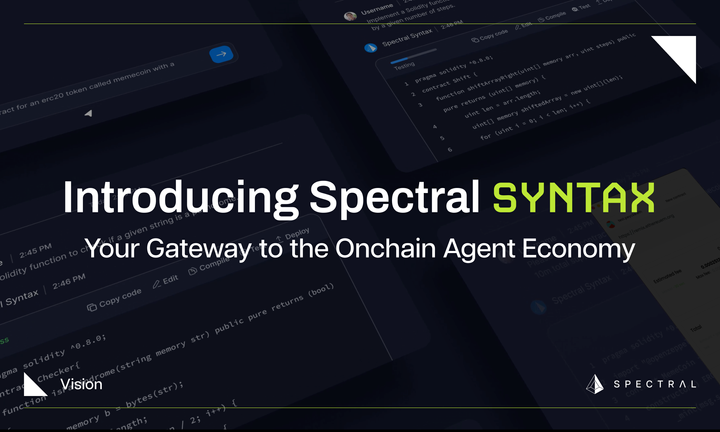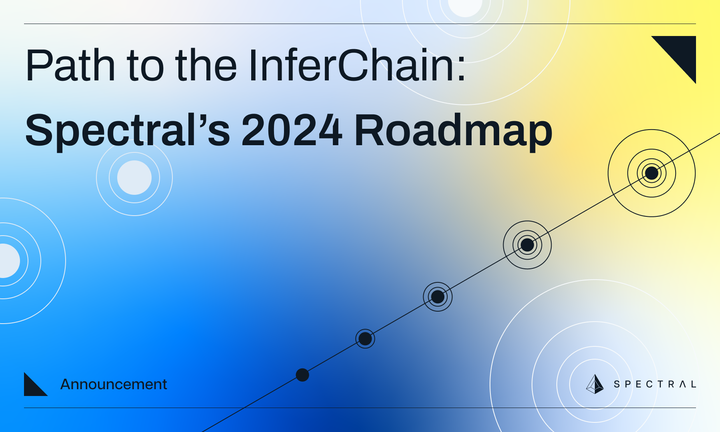15+ Use Cases for AI/ML Inferences in Web3
The convergence of AI and web3 has created an extraordinary number of use cases. We explore DeFi, NFT recommendation engines, Solidity LLMs, DAOs, DeSoc, and, security including auditing and fraud detection.
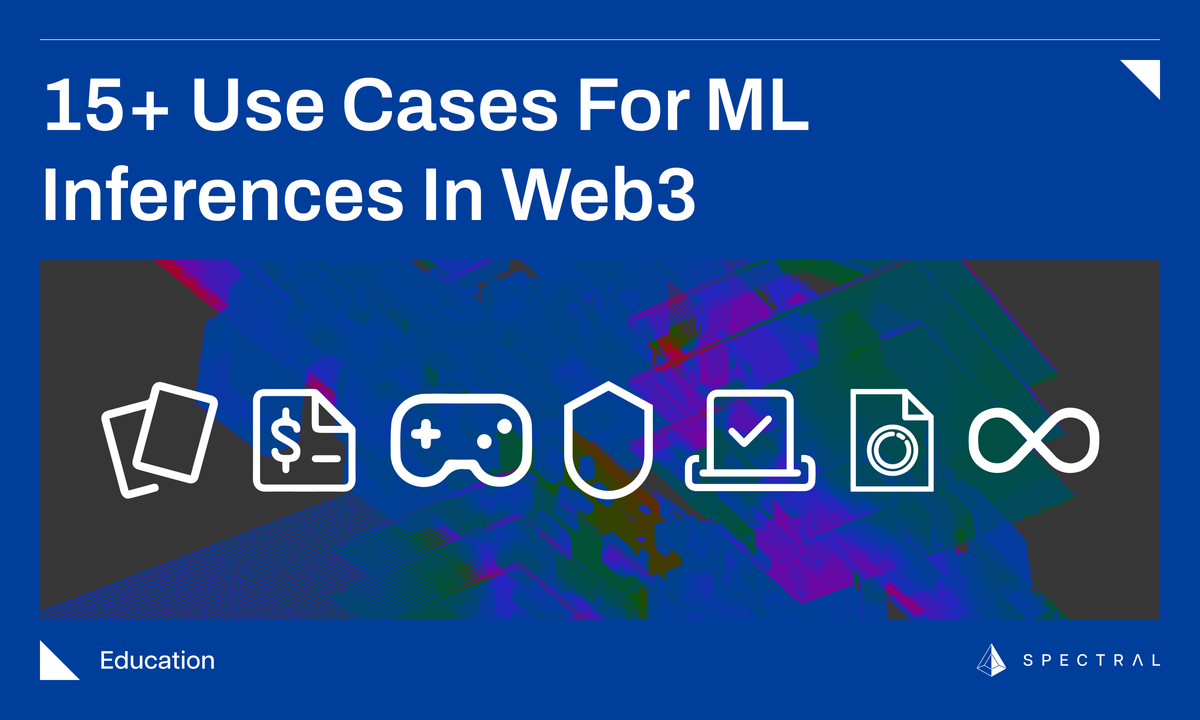
Artificial Intelligence (AI)'s rapid growth has largely been behind closed doors, the result of massive huge capital expenditure by centralized institutions. While open-source AIs like Mistral are coming online, most AI—and many important machine learning tools like credit scoring, etc—remains as opaque and centralized as ever. We think web3 will change this, adding utility, trust, and safety to the industry in the form of verifiable machine intelligence and providing AI agents a way to transacte between one another using smart contracts.
At Spectral, we are developing a Verifiable Machine Intelligence Network that democratizes access to secure and reliable AI inferences. The Spectral Network allows developers to leverage the power of ML inferences within smart contracts, unlocking a wide range of use cases across diverse industries.
We have compiled a list of 15+ ways across 7 key verticals to use Spectral's inferences. The opportunities are unlimitled, from enhancing DeFi with decentralized credit scoring to optimizing NFT markets and revolutionizing gaming experiences.

Spotlight: Coding Smart Contracts with LLMs
Although strides have been made, smart contract code is often unreliable which is why one of the most immediate use cases for AI and web3 is the application of large language models (LLMs) to Solidity code, which is the language that runs the Ethereum Virtual Machine (EVM) powering most contracts. One of the first challenges we present to the network Spectral will be the creation of a Solidty LLM.
The idea is to create something similar to Github’s co-pilot, a virtual assistant that would suggest code and be able to explain how things work. It could also help developers find the most gas-optimal and secure ways of creating a contract. Because there’s so much onchain data available, this is an extremely compelling use case because you can train an LLM on all the contracts ever written, and then refine it by pointing it to known code bases like Uniswap’s contracts and their documentation, and refine the model that way. Creating a Solidity-focused LLM would ensure that the code was in the latest version and as secure and gas-optimized as possible.
The Spectral platform was built from inception to be able to host several types of ML challenges to solve web3 use cases. If you sign up, you'll be notified when challenge details go live.
Decentralized Finance (DeFi)
Why DeFi x AI is the next big thing 🔥🔥🔥
— Vanna Labs (@0xVannaLabs) September 27, 2023
A guide to the future potential of DeFi x AI (DeFAI)🧵
According to David Mueller at ChainML, applying AI and ML in DeFi protocols enhances risk management and decision-making. AI models can assess and manage various risks and enable efficient asset pricing, trade execution, and treasury management or automate and optimize market-making and liquidity services. The convergence of AI-powered “agents” (semi-autonomous programs capable of reacting to real-time data) and smart contracts will create incredible opportunities for traders, investment portfolios, or other applications.
Decentralized Credit Scoring
When we created the MACRO Score, we used a combination of ML and real-time blockchain data, which proved capable of improving capital efficiency in lending protocols or even inching closer to undercollateralized lending. The dataset we developed is being used for our first challenge. The idea is to build an inference economy to provide safe, trustless, verifiable, AI-ready feeds of inferences for these smart contracts. In our first challenge, we're creating a feed of decentralized creditworthiness assessment scores for incorporation into smart contracts to create dynamic interest rates for lending protocols, composable debt instruments, and much more!
Other DeFi Challenges Being Researched by Spectral
UniswapX Collaborative Filler: Given the expanding space of pools and the increase of multichain activity, the existing framework for token swaps and bridging is not sustainable. Improving this requires a network of decentralized solvers competing and collaborating to satisfy user intents. Collaborative filling creates ensemble routes between multiple solvers who may have a better solution for fulfilling specific legs of the trade. Solvers compete to build a globally optimized pathfinder that routes across all individual UniswapX filler routes. Successful participants will not only help create a better experience for swappers, liquidity providers, and fillers on Uniswap but will deliver the first truly collaborative approach to decentralized solving networks. This framework will generalize to other intent based solutions.
Price Prediction: This challenge focuses on predicting the log returns of ETH (Ethereum) in USDC (USD Coin) over a period of up to thirty days in the Uniswap V3 USDC-ETH 0.05% pool. Consumers can leverage this inference feed to forecast short-term returns in the dynamic trading landscape of decentralized exchanges (DEX), specifically Uniswap.
If you sign up, you'll be notified when challenge details go live.
Decentralized Finance (DeFi) Credit Risk Analysis
Artificially intelligent models in DeFi protocols could assess various risks like credit, liquidity, and market risks, enabling efficient asset pricing, trade execution, and treasury management. They can also continuously monitor and adjust loan terms, improving lending protocol stability. Lending protocols might benefit from AI, for example, both Aave and Compound use sophisticated algorithms to manage liquidity, and dynamically adjust interest rates based on market conditions. AI would be a natural step forward toward more liquidity and capital efficiency.
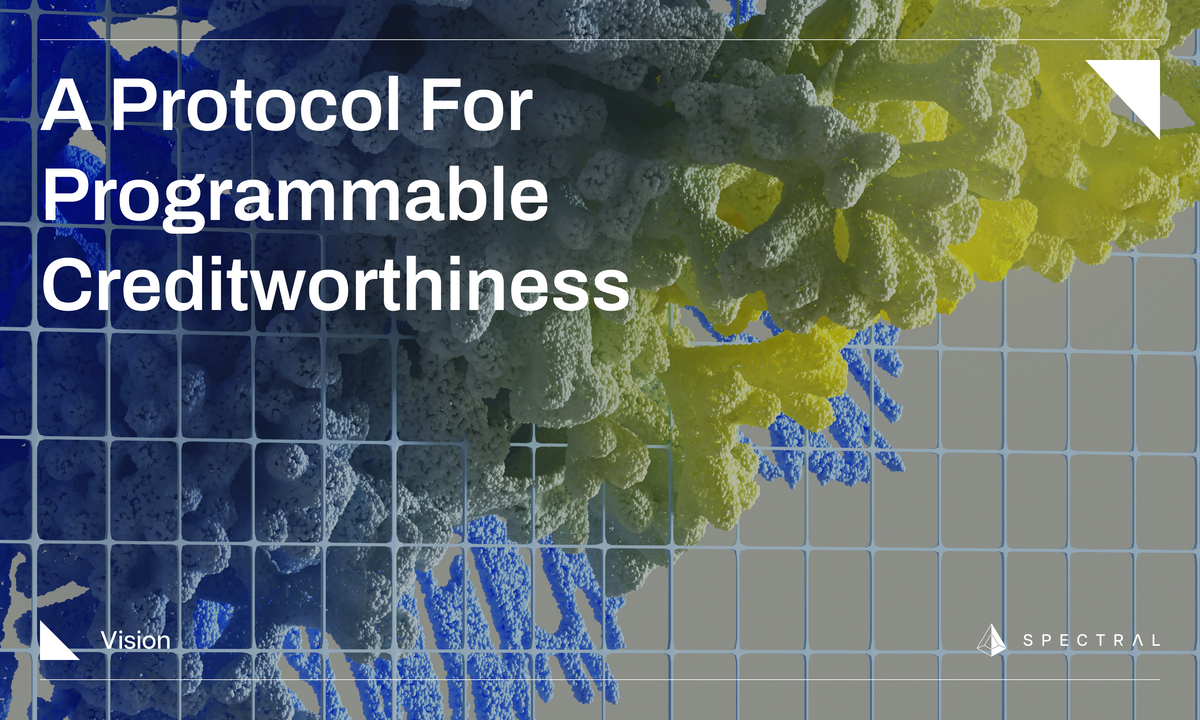
Staking Behavior Analysis
Artificial Intelligence can analyze the staking behavior of users in proof-of-stake blockchains, predicting trends and patterns in staking decisions. This includes forecasting which assets might be staked, understanding the motivations behind staking (such as rewards, network support, or governance participation), and identifying factors influencing staking and unstaking events. AI-augmented analysis could help institutions and projects gain a competitive edge, such as by developing new liquidity or financial offerings that anticipate market sentimenoffer, and staking would offer more dynamic information and products.
Decentralized Exchange (DEX) Trading Patterns Analysis
Trading pattern analysis or technical analysis was one of the first targets for artificial intelligence. The combination of AI agents and smart contracts creates natural opportunities for traders. On an institutional level, decentralized exchanges (DEX) like Uniswap, 1inch, 0xProtocol, or CoW Swap that facilitate token trading gather vast amounts of trading data, allowing for the analysis of trading patterns and market dynamics. Individual hedge funds or traders could also benefit from dynamic, artificially intelligent analysis of trading patterns.
Cross-Blockchain Liquidity Analysis
AI can be employed to analyze liquidity flows between different blockchain ecosystems, understanding how assets move across various DeFi platforms. This analysis could identify emerging trends in liquidity provision, detect potential liquidity crises, and suggest strategies for maintaining healthy liquidity levels across interconnected blockchain networks. Balancer and Bancor provide liquidity solutions across different blockchain ecosystems. They analyze and optimize liquidity pools, which suggests that AI could offer insight into cross-blockchain liquidity flows.
DAOs & Governance
What if...AI *is* the use case for DAOs
— Samantha Marin 🦅 (@samanthajmarin) January 20, 2023
Exploring topics like that in this Aragon piece was such a treat!
Thanks to @k3nnethfrancis, @ehalm_ for great interviews + @trentmc0 for an article series that inspired so much of this! 🙏https://t.co/NAq0KaEx4m
The integration of AI with Decentralized Autonomous Organizations (DAOs), as discussed by Aragon, heralds a transformative era in decentralized governance and operations. AI's application in DAOs ranges from enhancing user experience in governance through efficient information processing and decision-making assistance to actively participating in governance by voting and interacting with core contracts. AI can offer novel services and products within DAO structures, act as connectors between DAOs to foster collaborative intelligence, and even democratize AI governance. This paves the way for AI to manage resources and own treasuries with custom-built ML inferences, signifying a major integration of predictive insights in asset management.
updated DAO tooling map to include:@paymagic_@SolvProtocol @nowdaoit Yeet@CharmVerse@bip_so@TeamSobol@superdao_co @sznsNFT@koopxyz@1HiveOrg Gardens@deworkxyz
— Nichanan Kesonpat (@nichanank) March 29, 2022
@violetprotocol@LitProtocol@SpruceID@DegenScore
read more about them 👇🏼https://t.co/fyWzzlN45V pic.twitter.com/23F76S4Xqu
Decentralized Autonomous Organizations (DAOs) Voting Analysis
AI can significantly enhance the voting process within DAOs by providing sophisticated analysis and decision-making support. AI tools can assist in summarizing complex proposals, predicting the impacts of certain decisions, and even automating the voting process based on pre-set member preferences or strategies. This integration promises to streamline governance activities, ensuring more efficient, informed, and participative voting processes. By doing so, AI not only augments the democratic nature of DAOs but also addresses challenges like voter apathy and quorum attainment, making governance more agile and responsive to the community's collective will.
DAO Treasury Management
AI can assist in analyzing and optimizing the financial management of DAO treasuries. This includes investment strategies, fund allocation, risk assessment, and forecasting future financial needs, helping DAOs to make data-driven decisions for their treasury assets. Gnosis and MolochDAO provide tools and frameworks for managing DAO treasuries, including financial planning, asset management, and risk assessment.
Gaming
ai + web3 gaming is one of the easiest narratives to ride this year
— Hunter Solaire ᵍᵐ (@huntersolaire_) January 10, 2024
the best part about it is you don't have that many games to choose from
a lot of attention + very few projects = massive opportunity
there are 4 key projects everyone should be looking at right now… pic.twitter.com/fHyATpOA1g
Gamers, in their pursuit of ever-more enthralling virtual experience, have often pushed the boundaries of technology, including artificial intelligence and web3 (in fact a frequent complaint in the gaming community is that AI companies are driving up the price of high-end graphic processors capable which are being used for AI computation.)
AI is already being used for generating content, training combatants, and many other uses. Introducing web3 technologies allows streaming payments, transparency over rule sets and payouts, digital permanence, trophies that can be moved from one game or platform to another, NFTs representing digital assets within game worlds, rewards for early users and other boons.
Generative AI and art projects generally can also build AI and ML into their designs. One use might be tagging the influences or prompts used to create generative art, perhaps avoiding future liability, inference feeds can also create dynamically changing NFTs.
Player Behavior Analysis in Blockchain Games
The integration of Artificial Intelligence (AI) in player behavior analysis within blockchain games is opening new avenues for enhancing gaming experiences and strategies. In blockchain-based games, where player interactions and transactions are recorded on a decentralized ledger, AI can meticulously analyze this wealth of data to understand player behaviors, preferences, and trends. By examining patterns in gameplay, transaction histories, and in-game asset movements, AI provides developers and game designers with valuable insights. These insights help in tailoring game environments, balancing economic models, and improving player engagement. AI can also predict player actions, enabling developers to adjust game mechanics for optimal engagement proactively. For players, this translates to a more personalized and immersive gaming experience, with AI-driven features like dynamic difficulty adjustments, targeted in-game offers, and content that adapts to individual playing styles.
Moreover, in the realm of blockchain games, where digital assets and tokens often play a crucial role, AI's analysis of player behavior extends to economic interactions within the game. This includes understanding how players earn, spend, trade, and value in-game assets, which is vital for developing sustainable tokenomics in games. AI-driven analysis helps in identifying and preventing fraudulent activities, like the manipulation of in-game markets or exploitation of game mechanics. It also aids in creating fair and rewarding economic systems, ensuring that the in-game economy is balanced and aligns with the overall game design. For players, this means a more secure and equitable environment where their digital assets and in-game achievements hold real value. As blockchain gaming continues to evolve, AI's role in analyzing and shaping player behavior is poised to significantly impact the future of gaming, making it more engaging, secure, and economically viable.
Non-Fungible Tokens (NFTs)
Security
You can now create AI-generated NFTs with Coinbase NFT Instamint.
— Coinbase NFT 🛡️ (@Coinbase_NFT) January 18, 2024
Try it here: https://t.co/lmHeWvwLtg pic.twitter.com/wWRcgID4Mj
NFTs have emerged to represent ownership and authenticity in the digital realm. AI's integration into this sector is pioneering new frontiers, from generative AI art projects to dynamic NFTs. In this section, we delve into how AI could aid NFT recommendation, trend analysis, and provenance tracking.
Generative art projects can also build AI and ML into their designs. One use is tagging the influences or prompts used to create generative art, perhaps avoiding future liability, or inference feeds can also create dynamically changing NFTs.
In the realm of Non-Fungible Tokens (NFTs), AI is enabling innovations like generative art creation and intelligent, interactive NFTs. Binance’s AI NFT generator, Bixel, exemplifies this by allowing users to create unique AI-generated images from text or image inputs. These creations can then be minted as NFTs on the BNB Chain. Additionally, intelligent NFTs (iNFTs) are being developed, integrating AI to provide interactive tokens with evolving traits and reasoning abilities, potentially revolutionizing Web3 gaming and the metaverse.
1/ The Rise of the Intelligent Punk
— gmoney.9dcc.eth (@gmoneyNFT) April 15, 2021
I've been chatting with the team over at @real_alethea over the last few weeks, and got a sneak preview into what they're doing, and I must say, it's pretty incredible. Watch the video below to see for yourself: pic.twitter.com/Xm4cWrqABk
NFT Recommendation Engines
Another challenge we're looking at is creating an NFT recommendation engine. Despite the availability of high-quality, relevant on-chain data, widely used NFT marketplaces offer no real personalization to users. Each marketplace shows every user the same trending collections and centrally curated sections.
A single solver can develop an on-chain recommendation system by using transaction history, establishing a set of the most similar users, and then a set of recommended tokens and collections. A network of these solvers can coordinate to deliver an opt-in decentralized recommendation system. This is not a copy of every Web 2.0 recommendation method but a system designed to fix the many issues with recommendation approaches we see off-chain. This level of transparency and personalization will be critical for user experience as the number of tokens and collections increases and the blockchain user base grows.
Potential users of an AI-powered NFT recommendation engine include popular NFT marketplaces like Rarible and OpenSea or recommendation services such as ClubNFT. They could all potentially use AI to recommend NFTs to users based on past behavior and preferences.
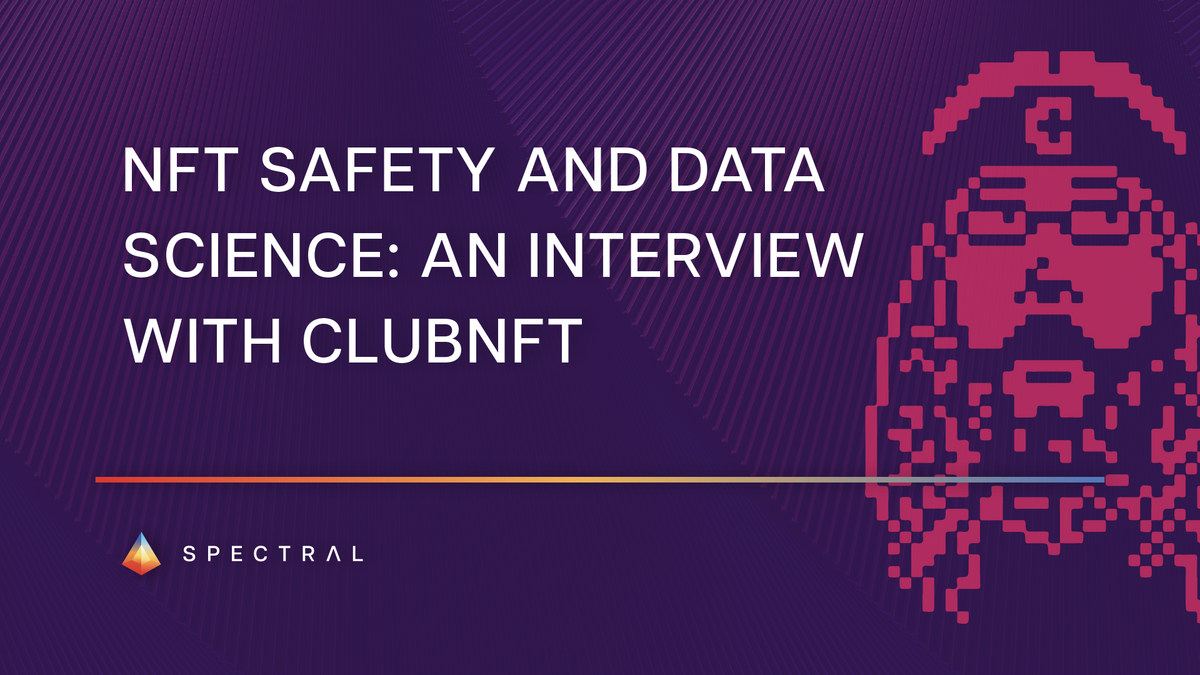
NFT Trend Analysis
Although NFT trading is down from its peak a few years ago, it remains a popular and competitive activity. NonFungible and DappRadar track NFT market trends and statistics, providing valuable data for analyzing trends in the NFT space, and could easily benefit from the pattern recognition and fidelity AI could provide. Hedge funds and individual traders or even galleries are another source of potential users.
NFT Provenance Tracking
Provenance—which is tracking ownership and authenticity of fine art—was one of the original use cases of NFTs, but the protocol that was eventually used left several potential holes. Specifically, minting an NFT is recorded on the blockchain, but not the file itself, which means duplicates of a file can be used to make fraudulent NFTs. Ownership trails can also be obscured fairly easily, making ownership tracking difficult. AI can be used to track and verify the provenance of NFTs, ensuring their authenticity and history. This can include tracing the creation, sale, and transfer history of NFTs, as well as identifying and flagging potential counterfeit or fraudulently altered NFTs. Provenance Blockchain and Codex Protocol focus on the provenance and authenticity of assets, which is crucial for NFT verification and tracking.
Security
Artificial Intelligence (AI) could become an essential component for ensuring security in web3. AIs will likely have a role in detecting and preventing fraudulent activities, and in protecting tokenized identities and transactions, which is achieved by analyzing blockchain data to identify anomalies and fraud patterns. AI could contribute to smart contract auditing by identifying vulnerabilities in their code and suggesting optimizations.
Fraud Detection
Introducing Bilic’s Mistral-7B AI fraud detection algorithm!
— bilic (@spectralhash) November 21, 2023
Inspired by the growing problem of financial fraud, we've developed a cutting-edge model to detect and prevent fraudulent conversations in real-time. pic.twitter.com/ZmpxeUOL1y
AI plays a pivotal role in enhancing the security of Web3, specializing in the detection of fraudulent activities. This technology is crucial in upholding the integrity of tokenized identities and transactions within the blockchain. By analyzing vast amounts of data, AI systems can identify irregular patterns and potential security breaches. Firms like Chainalysis and CipherTrace are at the forefront of blockchain analytics, employing AI to scrutinize and safeguard transactions against fraudulent activities. Their expertise in deciphering complex data patterns ensures a more secure and reliable blockchain ecosystem, making it a trusted environment for digital interactions and exchanges. This advanced application of AI in Web3 is a significant step towards maintaining a secure and transparent digital infrastructure.
Smart Contract Vulnerability Detection
In addition to identifying vulnerabilities, AI could revolutionize the development of smart contracts by suggesting optimizations for Solidity code. By analyzing existing coding patterns and common practices in blockchain development, AI tools can provide insightful recommendations for code improvement, actively enhancing the efficiency and cost-effectiveness of smart contracts. This optimization is crucial, especially considering the immutable nature of smart contracts once deployed, where any inherent inefficiencies or vulnerabilities can have long-term implications.
- Cyberscan: Helps investors make informed decisions by ensuring the security of smart contracts, providing a single source of truth for all relevant metrics.
- Safescan: Addresses privacy concerns in anonymous cryptocurrency projects, offering a solution that emphasizes transparency and trust, reducing risky behavior.
- Similarityscan: Aids investors in determining the uniqueness of a project by comparing smart contracts against a database of popular contracts for similarity.
- Signaturescan: Designed for spotting suspicious activities on the Ethereum blockchain, utilizing a set of private codes that have been security audited.
- MythX: An Ethereum smart contract security analysis platform that uses symbolic analysis to detect flaws, offering a range of security analysis tools including manual review.
- Slither: Assists developers in identifying security flaws in Solidity smart contracts, detecting issues like reentrancy and integer overflows, and offering correction suggestions.
- Echidna: Employs fuzzing methodology for testing smart contracts, identifying edge cases that conventional testing might miss, ensuring precision and security.
- TestMachine.ai: an AI-driven platform that automates software testing, enhancing efficiency and accuracy by leveraging artificial intelligence to identify bugs and optimize the testing process.
Tokenomics
Tokenomics involves the study of the economics of digital tokens, focusing on how these tokens are used and circulate within their ecosystems. AI's application in this field provides deep insights into token utility, circulation velocity, and economic models. It analyzes transactional data to understand token usage patterns and their impact on network behavior, including token distribution strategies and incentive models. AI helps predict market trends and user responses, guiding decision-making for balanced, sustainable token economies. It also plays a crucial role in detecting market manipulations and ensuring fairness and transparency in token transactions. Through AI, tokenomics analyzes current models and innovates and optimizes them, contributing to the efficiency, equity, and sustainability of digital currencies. This is vital for the growth and stability of blockchain technologies.
Tokenomics Model Evaluation
AI is revolutionizing the way we understand and develop tokenomic models in the digital currency landscape. By comparing and evaluating various tokenomic structures, AI provides comprehensive insights into their long-term sustainability, influence on user behavior, and overall contribution to the growth of their respective ecosystems. This analytical capability of AI is crucial in pinpointing the most effective and efficient models tailored to specific use cases in the ever-evolving digital economy.
For instance, platforms like MakerDAO and Synthetix, notable players in the DeFi space, utilize innovative tokenomic models that significantly impact the decentralized finance sector. MakerDAO's model stabilizes the value of its stablecoin, DAI, through a dynamic system of collateralized debt positions, while Synthetix uses a unique approach involving synthetic assets to provide exposure to a variety of assets. AI's role in analyzing these platforms extends to understanding how their tokenomic strategies affect market stability, user engagement, and liquidity provisioning.
Token Utility and Velocity Analysis
Artificial Intelligence is revolutionizing the way tokens are analyzed within their ecosystems, offering vital insights into user behavior, token circulation velocity, and the overall health of token economies. AI's advanced analytical tools can dissect complex usage patterns, providing clarity on how tokens function in practice. This includes understanding whether tokens are primarily used for transactions, investments, or staking, which is crucial for developers and stakeholders to strategize and enhance token utility.
Coinmetrics and Santiment are at the forefront of this analytical endeavor, providing comprehensive cryptocurrency and blockchain data analytics. They employ AI to track and interpret token transactions and behaviors, delivering crucial insights into token utility and velocity. This information is instrumental in assessing the dynamism of the token economy, with high velocity indicating active usage and exchange, while low velocity might suggest hoarding or limited utility. Such detailed analysis aids in informed decision-making for investments and future blockchain developments.
Other
Exclusive: @Worldcoin is launching new Orb the first half of this year
— Jacquelyn Melinek (@jacqmelinek) January 25, 2024
It is going to be similar to an Apple product, "more friendly" looking and "way [more] tuned down," its CEO and co-founder @alexblania said. https://t.co/RZLHLyVNGN
From analyzing influence patterns in decentralized social networks to trend analysis in prediction markets, AI is proving to be a versatile tool for enhancing and innovating across Web3.
Decentralized Social Network Influence Analysis
Artificial Intelligence in decentralized social networks like Mastodon and Peepeth can offer insights into user behavior, content spread, and the impact of decentralized governance. By analyzing user interactions and engagement, AI can uncover behavioral patterns, preferences, and interests within the network. This includes tracking post frequencies, interaction types, and responses to various content forms. AI's capability to identify key influencers and emerging trends could become critical, especially where traditional recommendation algorithms are less prevalent. It assesses metrics like engagement rates and follower counts to pinpoint users who significantly influence network discourse.
Regarding content dynamics, AI evaluates how information spreads across these platforms, which is crucial for understanding information dissemination in decentralized spaces. It tracks topic trends, the speed and pathways of content flow, and the influence of network structures on content virality. AI also plays a significant role in examining the effects of decentralized governance models on social dynamics, like changes in user engagement and community sentiment. With its federated community structure, Mastodon and Peepeth, emphasizing data control and mindful engagement, serve as examples where AI can analyze cross-community interactions and the unique impacts of blockchain-based post-permanence on social dynamics.
- "Follow the 'Mastodon’: Structure and Evolution of a Decentralized Online Social Network"
- "Exploring Platform Migration Patterns between Twitter and Mastodon: A User Behavior Study"
Prediction Market Trend Analysis
In decentralized prediction markets, AI plays a crucial role in analyzing market trends and forecasting future outcomes. These markets, platforms like Augur and Gnosis, allow users to bet on the outcomes of various events, ranging from financial markets to political elections and social phenomena.
AI algorithms can sift through extensive historical and current market data to identify patterns and trends. By analyzing past market behavior and outcomes, AI can discern underlying trends and factors that influence market movements. This includes fluctuations in market sentiment, impact of global events, and shifts in user behavior.
Utilizing the insights gained from data analysis, AI can make informed predictions about future market trends and events. These predictions could span various domains, such as finance (e.g., stock market trends), politics (e.g., election results), and social issues (e.g., public opinion trends). By processing vast datasets and employing advanced machine learning techniques, AI can provide more accurate and reliable predictions compared to traditional methods.
The application of AI in decentralized prediction markets significantly enhances the accuracy of insights and forecasts. AI’s ability to process large datasets quickly and identify complex patterns enables a deeper understanding of market dynamics. This, in turn, leads to more informed decision-making for participants in these markets.
- Augur: A decentralized platform that allows users to create and participate in prediction markets. AI's role in Augur could involve analyzing market trends on the platform, assessing the likelihood of various outcomes, and helping users make more informed predictions.
- Gnosis: Similar to Augur, Gnosis provides a framework for decentralized prediction markets. AI can be utilized to analyze the data generated on Gnosis, offering insights into future market trends and helping to improve the overall accuracy of the market's predictions.
The possibilities are unlimitled, from enhancing DeFi with decentralized credit scoring to optimizing NFT markets and revolutionizing gaming experiences.
Ready to discover the Inference Economy? Learn more about our Vision, Whitepaper, and Technical Documentation. If you have product feedback and suggestions for new challenges, hop in to our Discord to continue the conversation




